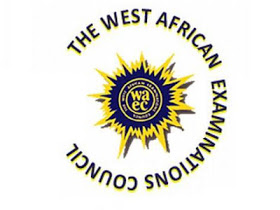NECO 2024 Geography Essay Human and Region Answer – June/July Expo
WELCOME TO AYOSTUFFS BEST EXAM EVER
==================================
KEEP REFRESH THIS PAGE IN EVERY 5MIN
==================================
NECO GEOGRAPHY
(1a)
(PICK ANY THREE)
(i) Fertile Land: The Nile Valley has rich, fertile soil due to the annual flooding of the Nile River, which deposits nutrient-rich silt. This fertility makes the land ideal for agriculture, supporting dense populations through abundant crop production.
(ii) Water Availability: The Nile River provides a reliable and consistent source of water for drinking, irrigation, and sanitation. In a predominantly arid region, this accessibility to water is crucial for sustaining large populations and agricultural activities.
(iii) Historical Significance: The Nile Valley has been a cradle of civilization for thousands of years. Ancient civilizations, such as the Egyptians, settled here due to the favorable living conditions, leading to a long history of human habitation and development.
(iv) Transportation and Trade: The Nile River serves as a major transportation route, facilitating trade and the movement of people. This connectivity boosts economic activities and attracts settlements.
(v) Climate: The climate in the Nile Valley is relatively mild compared to the surrounding deserts, making it more habitable and conducive to farming and other activities.
(1b)
(PICK ANY FOUR)
(i) Over-population can lead to a surplus of labor, resulting in high unemployment rates.
(ii) Increased population puts pressure on natural resources, leading to shortages.
(iii) Over-population often leads to inadequate housing and the growth of slums.
(iv) High population density can result in pollution and environmental damage.
(v) Over-population can overwhelm healthcare systems, leading to inadequate medical services.
(vi) It can lead to Increased poverty levels
(1c)
(PICK ANY TWO)
(i) Implementing comprehensive family planning and education programs to help control population growth.
(ii) Creating more job opportunities through economic diversification, investment in various industries, and encouraging entrepreneurship.
(iii) Developing better urban planning to manage housing and infrastructure needs.
(iv) Promoting sustainable use of resources through conservation efforts, renewable energy projects, and efficient waste management systems to reduce environmental impact and ensure resource availability for future generations
==================================
(2a)
(i) Cultural homogenization: Tourism can lead to the loss of local culture and traditions as global brands and chain hotels replace local businesses and authentic experiences. This can result in the erasure of unique cultural identities and the commodification of cultural heritage.
(ii) Social displacement: Tourism development can displace local communities, especially in areas with high demand for accommodation and infrastructure. This can lead to the displacement of long-term residents, loss of community cohesion, and increased housing costs.
(iii) Economic inequality: Tourism can exacerbate economic inequality as wealth generated by tourism often benefits external investors rather than local communities. This can lead to a lack of economic benefits for local residents and a widening of the income gap.
(iv) Environmental degradation: Tourism can lead to environmental degradation, such as pollution, over-development, and resource depletion, especially in sensitive ecosystems. This can result in the destruction of natural habitats, loss of biodiversity, and decreased environmental quality.
(2b)
(i) Sustainable tourism practices: Encourage responsible travel behaviors, such as reducing waste, respecting local customs, and supporting eco-friendly accommodations. This can include measures like recycling programs, energy-efficient practices, and cultural sensitivity training.
(ii) Community-based tourism: Empower local communities to manage and benefit from tourism development, ensuring that profits stay within the community. This can involve community-led tourism initiatives, local ownership of tourism businesses, and community benefit sharing.
(iii) Regulatory frameworks: Establish and enforce regulations to protect the environment, preserve cultural heritage, and ensure fair labor practices. This can include laws protecting natural resources, cultural heritage sites, and workers' rights.
(iv) Tourism education and awareness: Educate tourists, tour operators, and local communities about the impacts of tourism and promote responsible tourism practices. This can involve awareness campaigns, training programs, and community engagement initiatives.
==================================
(3a)
(i) Lack of infrastructure: Inadequate transportation networks, limited access to electricity and water, and poor telecommunications infrastructure make it difficult to establish and operate industries. This leads to increased production costs, reduced efficiency, and decreased competitiveness.
(ii) Limited access to finance: High interest rates, inadequate financing options, and lack of venture capital make it challenging for industries to access the capital needed to invest in equipment, technology, and human resources. This constrains their ability to grow and compete globally.
(iii) Dependence on primary commodities: Many African countries rely heavily on exporting raw materials, such as oil, minerals, and agricultural products, making them vulnerable to fluctuations in global commodity prices. This exposes them to external shocks, limiting their ability to industrialize and diversify their economies.
(iv) Brain drain and skills gap: Many African countries face a shortage of skilled workers, as talented individuals emigrate to other regions in search of better opportunities. This deprives industries of the expertise and knowledge needed to drive innovation, productivity, and growth.
(3b)
(i) Invest in infrastructure development: Governments and private investors should prioritize building modern transportation networks (roads, ports, airports), increasing access to electricity and water, and improving telecommunications infrastructure. This will reduce production costs, increase efficiency, and enhance competitiveness.
(ii) Develop financing options: Governments and financial institutions should create financing options tailored to the needs of industries, such as low-interest loans, venture capital funds, and private equity investments. This will enable industries to access the capital needed to invest in equipment, technology, and human resources.
(iii) Diversify economies: Countries should diversify their economies by developing value-added industries that process raw materials, reducing dependence on primary commodities. This can include industries like manufacturing, agro-processing, and services, which can create jobs, increase exports, and drive growth.
(iv) Develop skills and retain talent: Governments and industries should invest in vocational training and education programs to develop the skills of local workers and create opportunities to retain talented individuals. This can include partnerships with foreign universities, training institutes, and industries to transfer knowledge and expertise.
==================================
(4a)
(PICK ANY THREE)
(i) Topography and Relief: Areas with favorable topography, such as plains and lowlands, are more conducive to settlement as they provide flat land for construction, agriculture, and transportation. Conversely, rugged terrain like mountains and steep hills may hinder settlement due to difficulties in building infrastructure and cultivating land.
(ii) Climate: Regions with moderate and favorable climates, such as the savannah and forest zones, are more likely to support larger settlements. These areas typically have adequate rainfall and suitable temperatures for agriculture and human habitation. Extreme climates, like arid and semi-arid regions, often have sparse populations due to harsh living conditions and limited water resources.
(iii) Soil Fertility: Fertile soils, particularly in the river valleys and delta regions, attract settlements due to their suitability for agriculture. Areas with rich, arable land can support higher population densities because they provide ample food resources and opportunities for farming.
(iv) Economic Activities: Economic opportunities significantly influence settlement patterns. Urban areas with diverse job markets, commercial activities, and industrial centers attract large populations. Conversely, regions with limited economic opportunities may experience lower population densities and smaller settlements.
(v) Availability of Water Resources: Proximity to water bodies such as rivers, lakes, and streams is crucial for the establishment and growth of settlements. Water is essential for drinking, irrigation, sanitation, and industrial purposes. Settlements often develop near reliable water sources to ensure a steady supply for various needs.
(4b)
(PICK ANY FOUR)
(i) Inadequate Infrastructure: Many settlements in Nigeria lack basic infrastructure like roads, water, electricity, and sanitation, making them unsuitable for development.
(ii) Insecurity: Some settlements are located in high-risk areas prone to crime, terrorism, or communal conflicts, making them unsafe for residents and investors.
(iii) Environmental Degradation: Settlements in Nigeria often struggle with environmental challenges like pollution, flooding, and erosion, which can have devastating effects on residents' health and livelihoods.
(iv) Overcrowding: Rapid urbanization has led to overcrowding in many settlements, resulting in the growth of slums and informal settlements, which can perpetuate poverty and social inequality.
(v) Land Disputes and Insecurity of Tenure: Many settlements in Nigeria are plagued by land disputes, unclear ownership, and insecure tenure, making it difficult to develop or invest in these areas.
(vi) Limited Access to Basic Services: Settlements in Nigeria often lack access to essential services like healthcare, education, and social amenities, hindering residents' quality of life and opportunities for economic mobility.
==================================
(6a)
(i)Promotion of Economic Integration: ECOWAS aims to promote economic cooperation and integration among its member states to foster economic development and stability in the region. This includes the establishment of a common market, customs union, and monetary union.
(ii)Peace and Security: Another objective of ECOWAS is to promote peace, security, and stability within the West African region. The organization works towards resolving conflicts, preventing crises, and promoting democratic governance to ensure peace and security for its member states.
(iii)Promotion of Development: ECOWAS seeks to enhance the economic development and social progress of its member states. This includes initiatives to reduce poverty, improve infrastructure, and promote sustainable development in the region.
(6b)
(i)Political instability and conflicts in some member states, which divert resources and attention away from economic development and integration efforts.
(ii)Lack of effective implementation and enforcement of ECOWAS policies and decisions, due to inadequate institutional capacity and limited resources.
(6c)
(i)Strengthening of ECOWAS' institutional capacity, including the development of a more robust secretariat and more effective decision-making processes, to enhance implementation and enforcement of policies.
(ii)Increased investment in conflict prevention and resolution mechanisms, including mediation, arbitration, and peacekeeping capabilities, to address political instability and conflicts in member states.
==================================
COMPLETED
==================================




Comments
Post a Comment